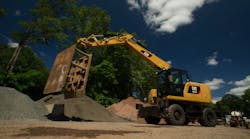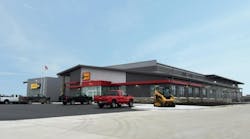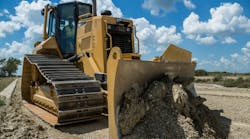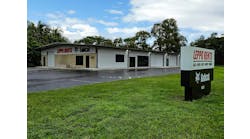Caterpillar Profits Better than Expected Although Sales Drop in Second Quarter
Although Caterpillar sales and revenue dropped 16 percent in the second quarter compared to last year, results were still higher than expected. Total sales and revenue was $10.342 billion compared to $12.317 billion in the second quarter a year ago. However, profit per share excluding restructuring costs improved to $1.40 compared to $1.09 a year ago.
“I’m pleased with our financial performance and focus on our long-term strategy given the difficult economic and industry environment we’re facing,” said Caterpillar chairman and CEO Doug Oberhelman. “Our goal when sales decrease is to lower costs so the decline in operating profit is no more than 25 to 30 percent of the decline in sales and revenues. For the quarter, our decremental operating profit pull through was better than our target range. Together with our dealers, we’re having success managing through the downturn in industries like mining and oil and gas, and in sluggish economic conditions in much of the developing world. In what is likely to be our fourth down year for sales and revenues, we’re proud of what we’re accomplishing – our machine market position has increased, including in China, product quality continues to be at high levels, and the safety in our facilities is world class.”
The decrease in sales and revenue was primarily the result of lower sales volume resulting from continued weak commodity prices globally and economic weakness in developing countries. While sales for both new equipment and aftermarket parts declined in all segments, most of the decrease was for new equipment. Unfavorable price realization also contributed to the decline.
Sales tumbled in all regions. In North America, sales slid 16 percent primarily because of lower end-user demand for construction, continuing declines in mining and the impact of low oil prices. In Europe, Africa and the Middle East sales dropped 15 percent primarily in Africa and the Middle East because of weak economic conditions resulting from low oil and other commodity prices and an uncertain political environment. The sales slide was more dramatic in Latin America with a 31-percent plunge primarily because of widespread economic weakness, particularly in Brazil and Mexico. Asia/Pacific sales dropped 13 percent primarily because of lower end-user demand for Energy & Transportation products.
In terms of segments, Resource Industries dropped 29 percent on low end-user demand; Energy & Transportation sales slid 20 percent, with low demand in oil and gas and transportation applications; Construction Industries’ decline was less, at 8 percent, while Financial Products declined 3 percent.
Looking at the rest of 2016, the company said world economic growth remains subdued and is not sufficient to drive improvement in most of the industries Caterpillar serves. Commodity prices apparently have stabilized but at low levels. Global uncertainty continues, and the recent “Brexit” outcome and turmoil in Turkey have added to risks, particularly in Europe.
Caterpillar still expects sales and revenues in the range of $40 to $42 billion for the year.
“Despite a solid second quarter, we’re cautious as we enter the second half of the year,” added Oberhelman. “We’re not expecting an upturn in important industries like mining, oil and gas and rail to happen this year. We’re continuing significant restructuring plans, which are designed to bring our cost structure more in line with demand while maintaining our capability to quickly serve our customers when our business recovers. Once it does recover, we expect substantial incremental profit improvement, realizing the benefits of the tough actions we’re implementing now coupled with our ongoing investments in products and digital capabilities. Amidst these very challenging market conditions, our balance sheet remains strong, and our employees are delivering better performance on everything from safety, quality and cost management to machine market position.”










